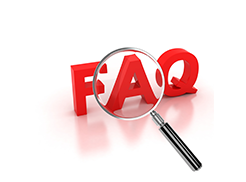(1) The aluminum profiles on the cooling bed must not rub, pull, overlap, crowd, or become entangled with each other during the picking, moving, and stretching processes. A certain distance should be reserved between each other. Profiles that are easy to bend and have long and short discharge lengths should be processed in time, and mutual protection should be done when necessary.
(2) When stretching the profile, the profile must be cooled to below 50 degrees (can be held firmly with bare hands) before it can be moved to the stretching frame for stretching. If the temperature is too high, stretching will burn the human body and burn the top. Moreover, because the internal stress of the profile cannot be completely eliminated, absolute waste products such as bending, twisting, and poor performance will appear before and after aging.
(3) Because tops have the effect of resisting heat dissipation, profiles with high decorative surface requirements must be turned up and down and front and back to facilitate uniform heat dissipation. Aluminum profiles reduce lateral bright spot defects caused by uneven heat dissipation and uneven crystallinity, especially More attention should be paid to profiles with large width and thick walls.
(4) Pay attention to the small feet, thin teeth, long legs, arc surfaces, inclined surfaces, openings, angles, etc. of profiles with high width-to-thickness ratios, long overhangs, large curvatures, widely differing wall thicknesses, and weird shapes. Strength conditions to prevent local or point-like dimensional deformation, twisting, spiraling and other defects of the profile.
(5) The stretching amount should be controlled at about 1%. For example, the stretching amount of a 25M profile should be stretched by about 25CM after straightening the profile, but it must not exceed 2%. Production should be adjusted according to the actual situation of profile discharging and various specific requirements (opening size, surface quality, outer dimensions, inner diameter size, wall thickness, elongation, etc.), and a solution that can simultaneously meet various conflicting technical requirements is sought. A specific amount of stretch required. Excessive stretching will produce head, middle and tail size deviations, water-like twists (fish scales) marks on the surface, low elongation, high hardness and brittleness (low plasticity). Too low a tensile amount will result in low compressive strength and hardness of the profile. Even aging (quenching) cannot increase the hardness, and the profile will easily bend in an arc (commonly known as a large bend).
(6) In order to control the amount of tensile deformation and better control the dimensional changes of the entire profile, appropriate special clamps and appropriate methods should be used. Especially for open materials, arc materials, cantilever materials, and curved profiles, more attention should be paid to the reasonable and effective use of stretch clamps. If necessary, there should be someone in the middle of the stretched profile to control and straighten or insert a pad to ensure that the stretch size between the head, middle and tail sections meets the requirements of the profile.


